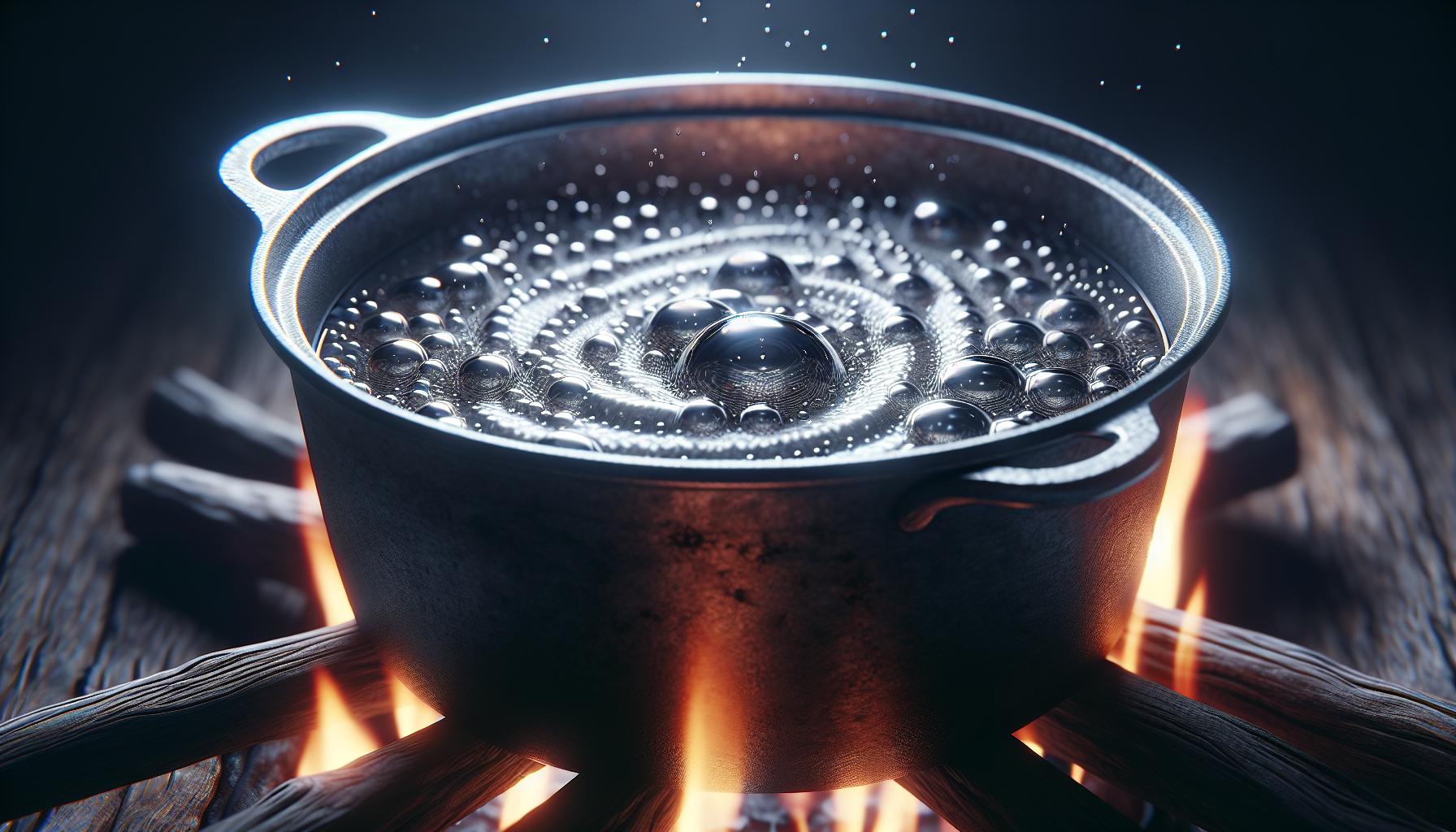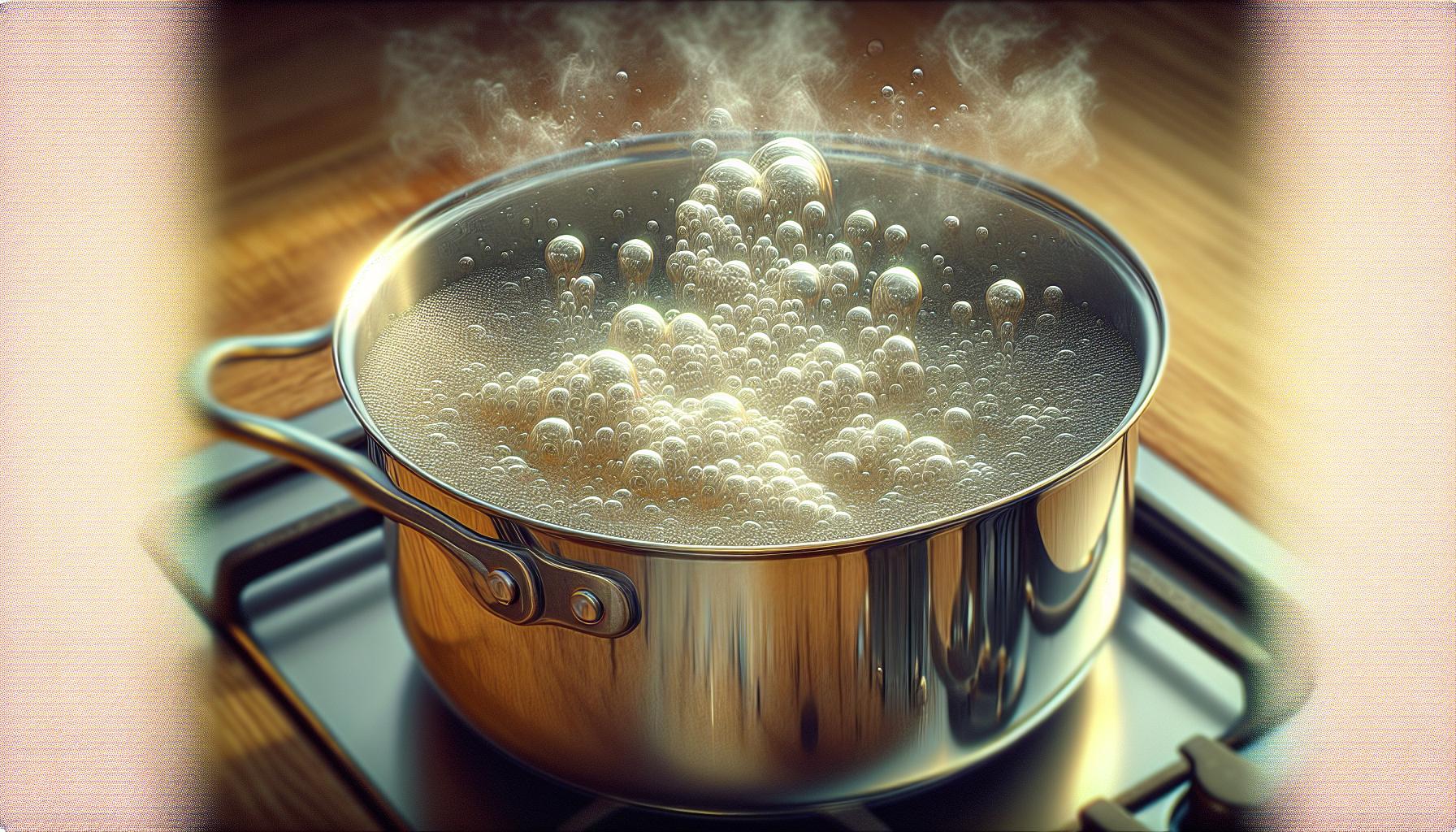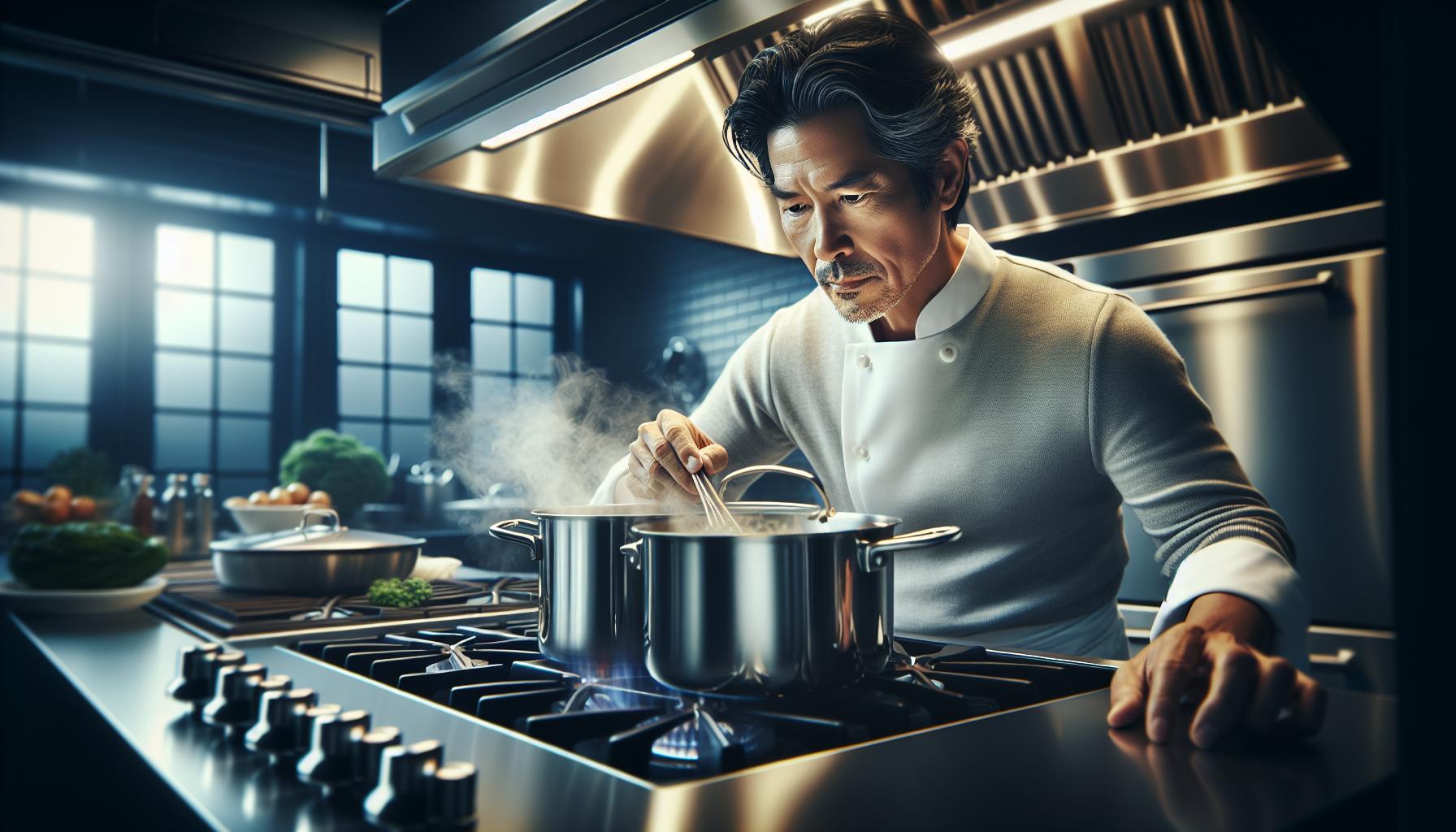This post contains affiliate links. See the affiliate disclaimer here.
Simmering is a fundamental cooking technique that can take your dishes to the next level. But what exactly does simmer look like?
In this article, we will explore the visual cues and characteristics of simmering, helping you become a master of this cooking method.
From the gentle bubbles to the steam rising from the pot, simmering is a delicate dance of heat and time that transforms ingredients into flavorful creations. So, let’s dive in and uncover the secrets of what simmer looks like.
Simmering is often confused with boiling, but they are not the same. While boiling is a vigorous process with large, rolling bubbles, simmering is much more subtle.
When you simmer, you’ll notice small, gentle bubbles lazily breaking the surface of the liquid. It’s a low and slow cooking method that allows flavors to meld and develop over time. So, if you’ve ever wondered how to achieve that perfect simmer, keep reading as we unravel the visual clues that will make your dishes shine.
The Difference Between Simmering and Boiling
When it comes to cooking, it’s essential to know the difference between simmering and boiling. Although these terms are often used interchangeably, they refer to two distinct cooking techniques. Understanding the characteristics of each method will help you achieve the best results in your recipes.
Simmering is a gentle cooking technique that involves heating a liquid to just below its boiling point. It’s characterized by small, gentle bubbles breaking the surface of the liquid. Simmering allows your food to cook at a low and steady temperature, preserving its flavors and textures while preventing it from becoming overcooked. This method is perfect for delicate ingredients, such as fish or vegetables, that require a more delicate touch.
On the other hand, boiling is a more vigorous cooking technique that involves heating a liquid to its highest possible temperature, where rapid bubbles break the surface continuously. Boiling is ideal for preparing ingredients that require a higher temperature to cook properly, such as pasta, hard-boiled eggs, or starchy vegetables like potatoes.
The key difference between simmering and boiling lies in the intensity of the bubbles and the temperature at which the cooking process occurs. While simmering involves gentle, slow bubbles at a lower temperature, boiling requires rapid, rolling bubbles at a higher temperature.
By understanding this difference, you can choose the right cooking technique for your specific recipe and achieve optimal results. Simmering is great for developing flavors, tenderizing meats, and creating rich sauces. Boiling, on the other hand, is perfect for quickly cooking vegetables, pasta, and other ingredients that require a higher heat.
Characteristics of Simmering

Simmering is a cooking technique that involves heating a liquid just below its boiling point. This gentle method of cooking allows flavors to develop slowly and ingredients to cook gently and evenly. Simmering is characterized by the following key features:
1. Low Heat: When simmering, you typically use low to medium-low heat. This helps prevent the liquid from reaching a rolling boil and keeps it at a steady temperature just below the boiling point. It’s important to find the right balance to maintain a constant simmer without allowing the liquid to boil vigorously.
2. Gentle Bubbles: Unlike boiling, simmering is marked by small, gentle bubbles that rise slowly to the surface of the liquid. These bubbles break the surface slowly and evenly, creating a soothing and steady motion. The bubbles should be smaller and less vigorous compared to the rapid and forceful bubbling of boiling.
3. Maintaining Consistency: Simmering is a prolonged cooking method where the liquid is maintained at a consistent temperature over a longer period of time. It allows ingredients to cook gradually and evenly, ensuring that flavors meld together and that tougher cuts of meat become tender.
4. Cooking Time: Simmering is often used for recipes that require longer cooking times, such as stews, soups, and braised dishes. This slow and steady cooking process allows the flavors to deepen and intensify, resulting in rich and flavorful dishes.
5. Delicate Ingredients: Simmering is particularly suitable for delicate ingredients that require gentle heat to retain their texture and flavors. Delicate proteins like fish and shellfish, as well as vegetables and fruits, can benefit from simmering as it helps to preserve their delicate nature.
Understanding the characteristics of simmering helps you choose the right cooking technique for specific recipes. Whether you’re making a comforting soup or simmering a flavorful sauce, mastering the art of simmering will elevate your cooking to new heights. So, take the time to appreciate the gentle bubbling and slow development of flavors that simmering brings to your dishes.
Visual Cues of Simmering

When it comes to simmering, there are certain visual cues you can look for to determine if you’ve achieved the desired heat level. These cues can help ensure that your ingredients are being cooked at the right temperature and that flavors are developing slowly and evenly.
- Small, Gentle Bubbles: One of the key visual cues of simmering is the presence of small, gentle bubbles. Unlike boiling, where the bubbles are large and rapidly rising to the surface, simmering bubbles are much smaller and rise slowly. These tiny bubbles indicate that the liquid is heated just below its boiling point and that the cooking temperature is low to medium-low.
- Surface Movement: Another visual clue of simmering is the movement of the liquid’s surface. As the liquid simmers, you’ll notice a gentle, occasional movement on the surface. It may appear as slight ripples or barely perceptible shifts. This gentle movement is a sign that the heat is evenly distributed and that the cooking process is proceeding steadily.
- Minimal Evaporation: Compared to boiling, where there is significant evaporation, simmering involves minimal water loss. The liquid level should remain relatively stable, with only a small amount of steam escaping. This helps to preserve the flavors and textures of the ingredients without drying them out.
- Clear Liquid: Simmering also tends to result in a clearer liquid compared to boiling. The slow, gentle heat allows impurities and sediments to settle to the bottom, resulting in a clearer broth, soup, or sauce. This clarity not only contributes to the visual appeal of the dish but also indicates that the cooking process is proceeding smoothly.
Achieving the Perfect Simmer
When it comes to simmering, achieving the perfect temperature is crucial for cooking your ingredients to perfection. The visual cues of simmering can help guide you to the ideal simmer. Here are some tips to help you achieve the perfect simmer every time:
- Adjust the heat: Start by heating your liquid on medium-high heat until it reaches a gentle boil. Once it reaches this point, reduce the heat to low to maintain a simmer. Adjust the heat as needed throughout the cooking process to maintain a steady simmer.
- Utilize the right cookware: Using the right cookware is important for achieving the perfect simmer. A heavy-bottomed pot or saucepan can help distribute the heat evenly, preventing hot spots that could cause ingredients to scorch or boil instead of simmer.
- Monitor the liquid: Keep an eye on the liquid as it simmers. You should see a few small bubbles gently rising to the surface and bursting slowly. If the bubbles are too small or too fast, increase the heat slightly. If the bubbles are large and rapidly rising, reduce the heat to achieve a gentler simmer.
- Maintain a consistent surface movement: Simmering should create a gentle movement on the surface of the liquid. It’s important to avoid stirring too vigorously, as this can disrupt the simmering process. Instead, use a gentle stirring motion to help distribute heat and ensure even cooking.
- Control the evaporation: Unlike boiling, simmering involves minimal evaporation. If you notice that the liquid is reducing too quickly, cover the pot partially to control the evaporation. This will help maintain the desired simmering consistency.
Conclusion
Achieving the perfect simmer is essential for cooking delicious meals. By following the tips provided in this article, you can ensure that your ingredients are cooked at the right temperature and that flavors develop slowly and evenly.
Adjusting the heat is crucial in achieving the desired simmer. By finding the right balance, you can prevent your dish from boiling or scorching. Additionally, using the right cookware helps distribute heat evenly, ensuring that all ingredients are cooked to perfection.
Monitoring the liquid and maintaining a consistent surface movement are key factors in achieving the perfect simmer. By keeping an eye on the liquid level and adjusting it as needed, you can prevent your dish from drying out or becoming too watery. Controlling evaporation also helps maintain the desired simmer, allowing flavors to meld together beautifully.
By implementing these tips, you can achieve the perfect simmer and elevate your cooking to new heights. So go ahead, experiment with different recipes, and enjoy the delicious results that simmering brings to your meals. Happy cooking!
Frequently Asked Questions
Q: How can I achieve the perfect simmer?
A: To achieve the perfect simmer, adjust the heat, use the right cookware, monitor the liquid, maintain consistent surface movement, and control evaporation.
Q: What do I need to adjust heat for the perfect simmer?
A: Adjust the heat to low or medium-low to maintain a gentle simmer without boiling.
Q: What type of cookware should I use for simmering?
A: Use thick-bottomed cookware to distribute heat evenly and prevent scorching.
Q: Why is it important to monitor the liquid?
A: Monitoring the liquid prevents it from evaporating too quickly or boiling over, ensuring the desired simmer consistency.
Q: How can I maintain a consistent surface movement?
A: Maintain a gentle, steady bubbling or rippling motion on the surface by adjusting the heat appropriately.
Q: Why is controlling evaporation crucial for simmering?
A: Controlling evaporation prevents excessive liquid loss, keeps flavors concentrated, and ensures the desired consistency of the simmered dish.

